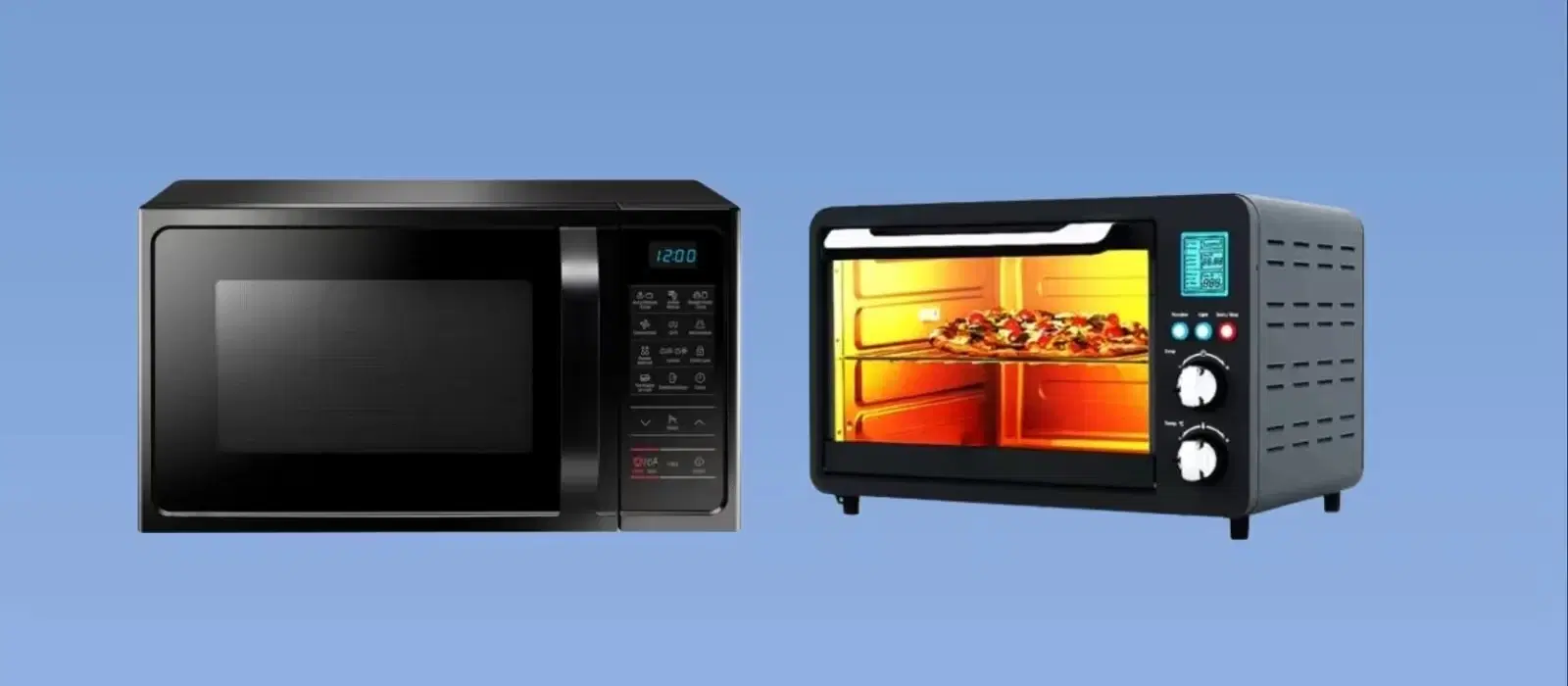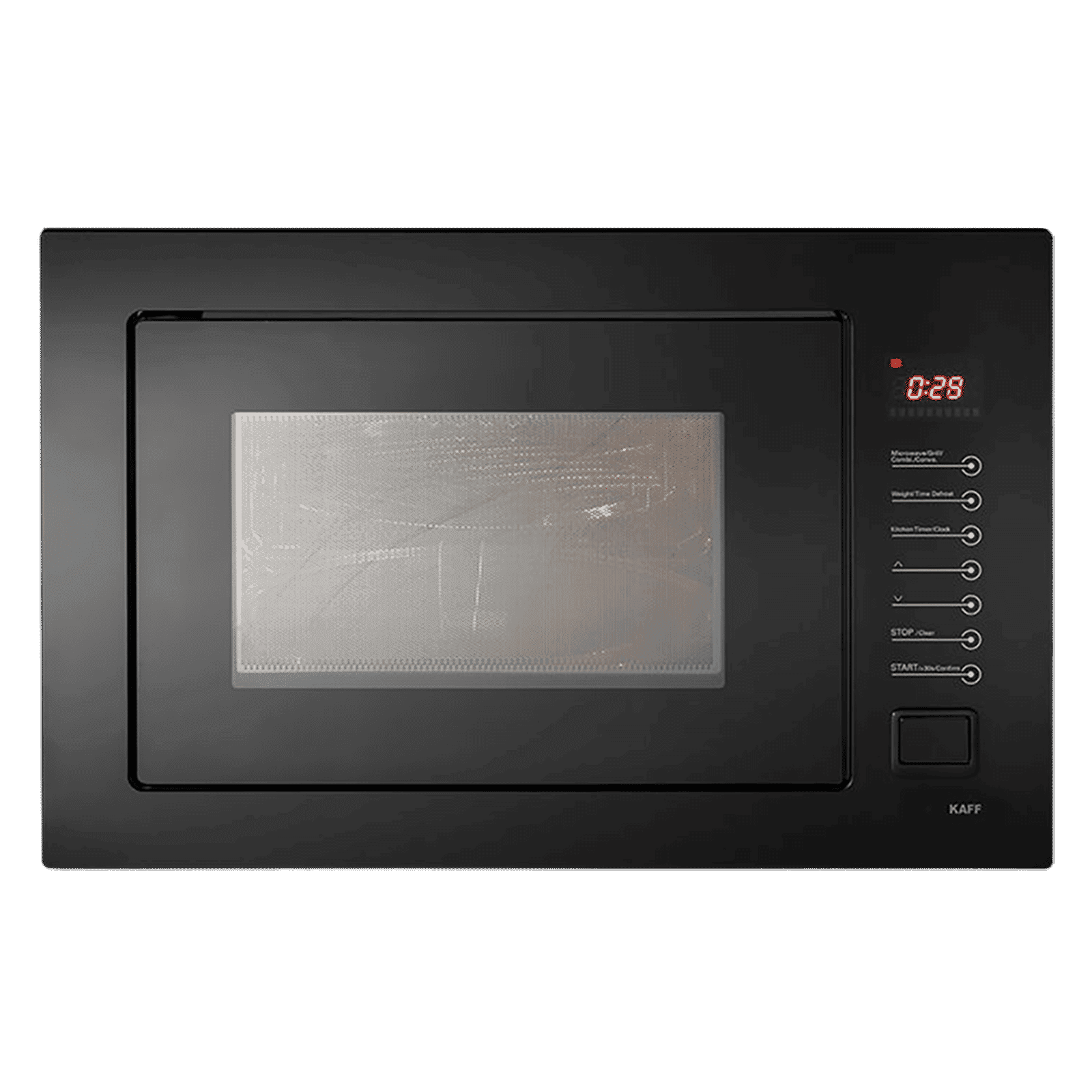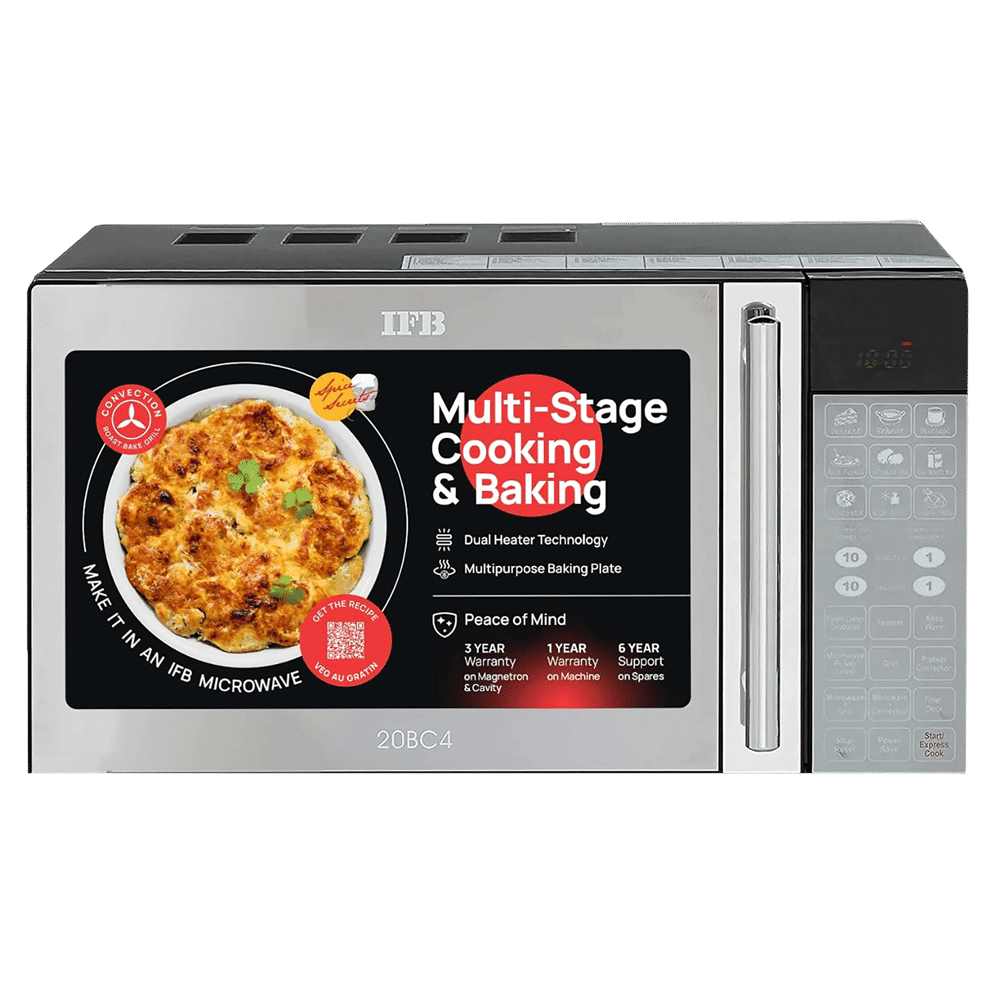
Home Appliances
•04 min read

Buy IFB 30FRC2 30L Convection Microwave Oven with 101 Autocook Menus (Black Floral) online at best prices from Croma. Check product details, reviews & more. Shop now!
Imagine setting up your kitchen with a microwave that fits perfectly into your space—no awkward gaps, no wasted counter space, and no expensive returns. The journey to finding the ideal appliance can be overwhelming, given the vast range of options available today. This guide simplifies the process with 10 detailed microwave size charts, designed to provide clarity on microwave dimensions, capacity, and specific space requirements that suit your kitchen layout.
Choosing the right microwave size is crucial not only for the appliance itself but also for the overall functionality and aesthetics of your kitchen. A microwave that is too large may overcrowd your countertop, whereas one that is too small might not meet your cooking needs. Understanding microwave space requirements is essential because these vary significantly by design and intended usage. Whether you have a compact kitchen or a spacious one, getting the dimensions right is the first step towards a harmonious kitchen setup.
Standard microwave sizes generally range from compact options ideal for smaller spaces, to mid and large-size models for family meals. Familiarising yourself with these sizes can help you quickly narrow down the choices that best fit your cooking routines and available space.
When opting for a microwave, it is important to understand the distinction between external dimensions and internal capacity. External measurements such as height, width, and depth are often expressed in inches, centimeters, or millimetres. Meanwhile, the internal capacity, usually measured in cubic feet or litres, determines how much food you can easily place inside, making it a key factor in everyday cooking tasks.
Consider a microwave capacity chart to quickly compare options: a 0.7 cu ft microwave is perfect for simple reheating tasks, while a 1.1 cu ft model works well for small families. For larger needs, a 1.6 cu ft microwave is ideal for hearty family meals, and questions such as "Is a 1.6 cu ft microwave large?" or "How big is a 1.3 cubic foot microwave?" are conveniently answered by consulting these detailed specifications.
This chart details the dimensions of small microwave options, ideal for students or those in dorms where space is at a premium. Compact microwave measurements are invaluable when every inch of counter space counts.
Standard countertop microwave dimensions are covered here to help you understand the space allocation necessary for placement. These guidelines ensure that your microwave is not only functional but also harmoniously fits into your kitchen design.
If you prefer a sleek, integrated look, the built-in microwave size guide covers detailed dimensions and tips for seamless installation. The focus here is on ensuring that the appliance fits perfectly within the designated cabinet space.

Buy KAFF KMW8A 25L 60cm Built-in Microwave with Multi Programming Mode (KMW8A-BLK, Black) online at best prices from Croma. Check product details, reviews & more. Shop now!
This section focuses on models designed to sit above the range, discussing the unique space requirements and dimensions necessary for proper installation and effective use.
A side-by-side size comparison of various models is offered in this chart. It helps you quickly assess which microwave might best suit your cooking habits and kitchen layout.
For kitchens requiring unconventional solutions, this chart highlights dimensions for low-profile, drawer-style, and combo microwaves, ensuring every unique cooking need is met without compromise.
This guide provides the cabinet cutout dimensions necessary for built-in models, ensuring that installations are smooth and aesthetically pleasing.
Different kitchen layouts, from galley to L-shaped, have distinct needs. This chart matches microwave sizes to various layouts, ensuring optimal placement and ease of use.
Good ventilation is critical. This chart details how much clearance you should maintain around your microwave, preventing overheating and enhancing safety.
This conversion chart helps you translate measurements between inches, centimetres, and millimetres, ensuring you can accurately compare and plan based on the details provided.
While size is a primary factor, other elements such as wattage, available features, and optimal placement significantly influence your decision. Think about your cooking habits – whether you frequently reheat leftovers or often prepare elaborate meals – to select a model that truly meets your needs.

Buy IFB 20L Convection Microwave Oven with 71 Autocook Menus (20BC4, Black) online at best prices from Croma. Check product details, reviews & more. Shop now!
Different microwave capacities cater to different usage scenarios. A compact microwave might be ideal for quick warm-ups, whereas a larger model can serve families with regular cooking needs. Evaluating your daily use will help determine which size is most appropriate for your kitchen.
Pro Tip from Tata Neu: Always leave at least 3 inches of clearance on all sides of your microwave to ensure proper ventilation and avoid overheating. This simple step can extend the life of your appliance, keeping your kitchen safe and efficient.
Measuring your current kitchen space and the existing microwave (if available) is simple yet essential. Start by measuring the height, width, and depth of the area where the appliance will be placed or installed. Ensure to account for additional space needed for ventilation by adding extra inches as per the guidelines.
When installing a new microwave, especially a built-in model, it is vital to ensure a snug fit within the cabinet or chosen space. Following the recommended clearance guidelines not only facilitates proper ventilation but also contributes to a clean, streamlined kitchen design. Proper installation can also prevent future maintenance issues, contributing to the overall longevity of your appliance.
Standard microwave sizes typically range from 0.7 cu ft for compact units to 2.2 cu ft for larger models, with dimensions varying by design.
Yes, a 1.6 cu ft microwave is considered mid-to-large and is generally suitable for family use or frequent cooking requirements.
A 1.3 cu ft microwave usually measures around 20 inches in width, 12 inches in height, and 16 inches in depth, making it an ideal choice for medium-size kitchens.
Countertop microwave dimensions require at least 3 inches of clearance on all sides to ensure optimal ventilation and safe usage.
Selecting the proper microwave size chart tailored to your kitchen layout not only simplifies the decision-making process but also enhances your cooking experience. With detailed charts covering everything from compact measurements to built-in guides and ventilation clearances, making an informed decision has never been easier. These insights help you avoid common pitfalls such as overcrowded countertops or installation issues, ensuring your kitchen remains a space of both functionality and style.
When you shop for kitchen appliances, consider the benefits that come with a seamless shopping experience—quick delivery, trusted after-sales support, and even rewards through NeuCoins that make every purchase valuable. The guide provided here offers practical advice for every type of space and cooking need, empowering you to create a kitchen setup that truly works for you.